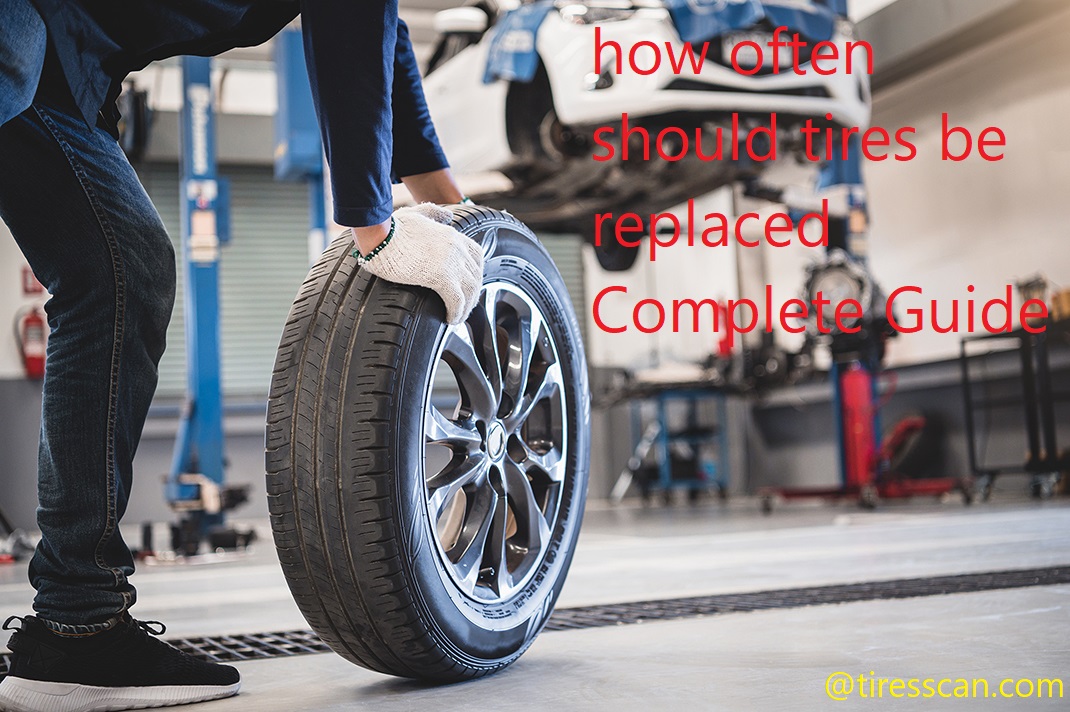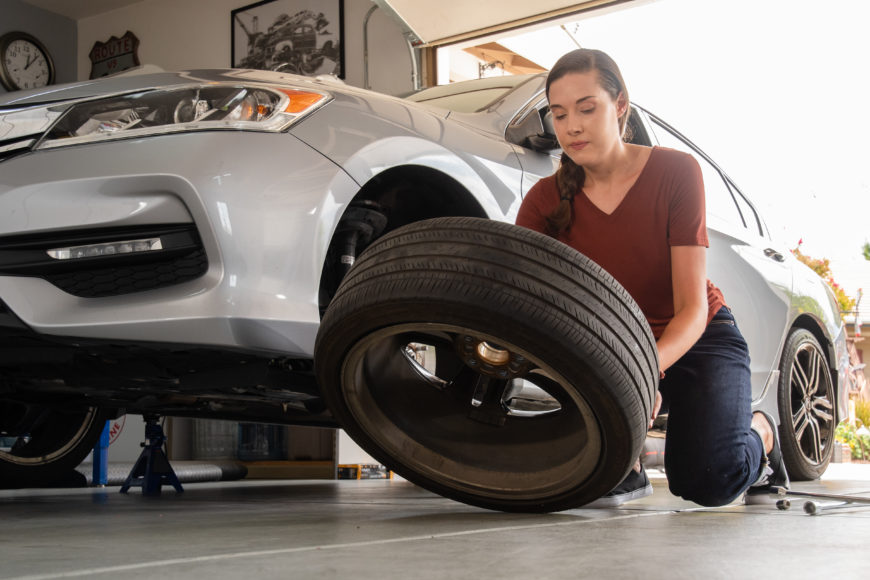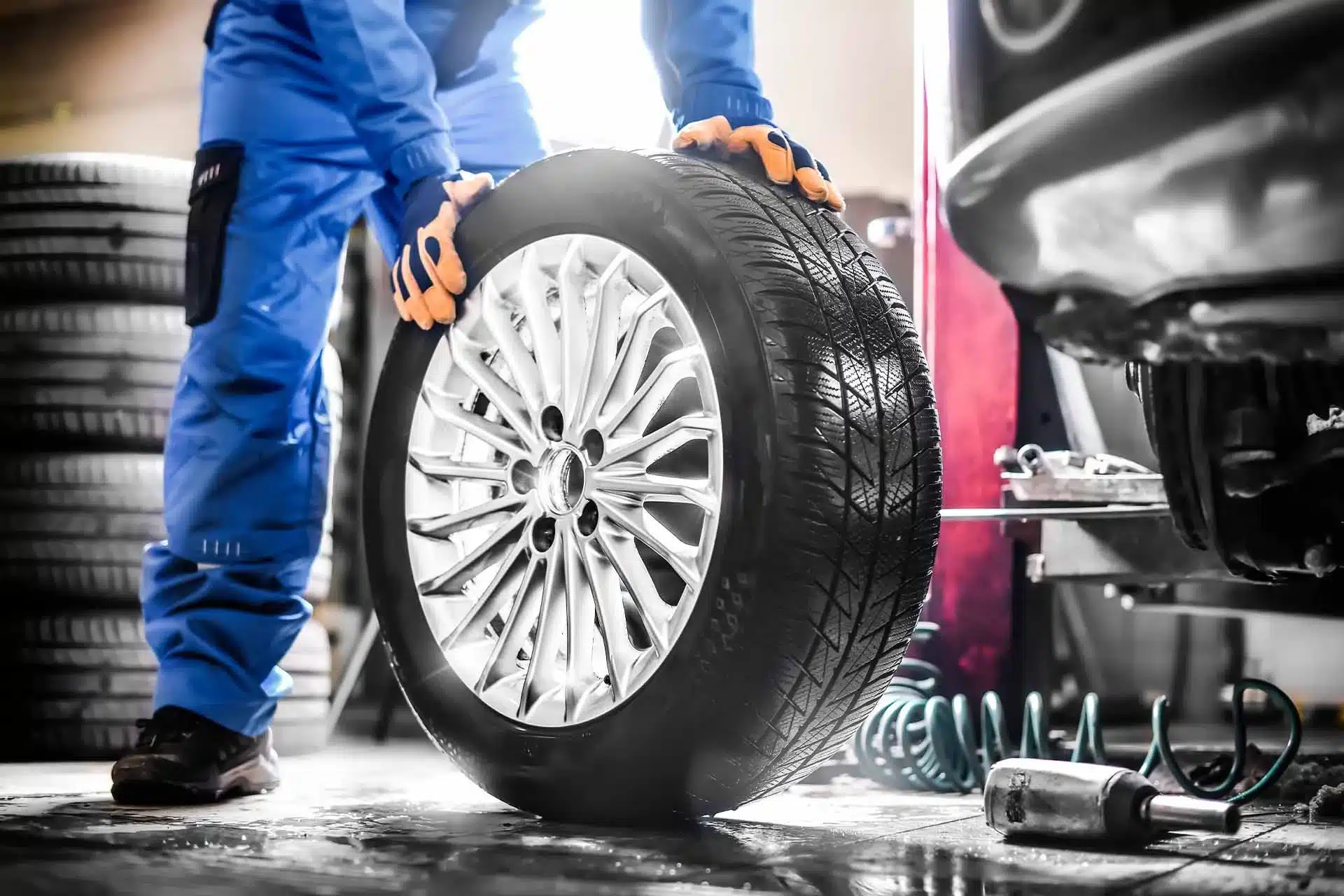Do you ever worry about the condition of your tires? Are you knowledgeable about when to replace them? Don’t worry, this guide will help you understand how often tires need to be replaced for safer and smoother drives.
Introduction: When it comes to protecting your safety, one of the most important aspects of your vehicle is ensuring that your tires are in good condition. With regular wear and tear, the rubber on your tires will start to deteriorate over time, putting the safety of your car and those riding inside at risk.
To help drivers understand when their tires need to be replaced, this guide will outline the basic principles behind tire maintenance. It will explain when it is time to replace them and provide guidelines for caring for tires as they age. It will also provide information on how often a rotation should take place and how to tell when a tire needs a replacement before its expiration date. Finally, we’ll cover why having reliable tires is so important for overall driver safety.
Importance of tire maintenance and replacement
Tire maintenance and replacement is an important part of vehicle ownership. Properly maintained tires provide better traction, better fuel efficiency, and a smoother ride. Additionally, properly maintained tires help ensure the overall safety of a vehicle and its passengers by ensuring the proper level of tread depth on each tire to ensure maximum control in inclement weather conditions such as rain and snow.
Therefore, it is important that vehicle owners understand the importance of replacing their tires as needed and not just when they are worn out. Even though there are recommended mileage limits for tire replacements which vary based on a variety of factors (including type of tire, type of vehicle, speed rating, etc.), it is important to be proactive in monitoring your tire condition and to replace your tires as needed even if they still have some tread remaining. This proactive approach can help prevent unexpected blowouts or other loss-of-control episodes due to tire failure while driving.
It is also recommended that vehicle owners regularly check their tires for any signs of wear or damage from punctures or other hazards encountered while driving on roads and highways. Additionally, vehicles should be routinely rotated every 5-6K miles to ensure maximum tread time for each tire. Finally, valve stem caps should regularly be checked for any signs deterioration or corrosion; if necessary new valve stem caps should be replaced as soon as possible to prevent air leaks due to corroded stems or damaged caps.

Factors affecting tire lifespan
When it comes to determining how often you should replace your tires, there are a range of factors that can have an impact on the lifespan of a tire. The following are some of the most important things to consider:
- Driving Habits: Aggressive braking, acceleration and cornering can all take a toll on your tires, as they increase tire wear. Repeated hard stops can cause them to age faster due to overheating. Another factor that affects tire wear is speed — the faster you drive, the more strain your tires will be subjected to. In general, if you are an active driver who pushes the boundaries of your car’s handling capabilities, you may need to replace your tires sooner than those who drive cautiously and at moderate speeds.
- Type of Vehicle & Load:The size and type of vehicle you have makes a difference when it comes to deciding how often tires should be replaced; larger vehicles such as SUVs or pickup trucks tend to put more stress on the tires due to their weight and size than smaller cars do. If you frequently transport large loads in your vehicle, such as cargo boxes or anything else that adds extra weight on top of it, your tires will also see more wear than usual over time.
- Tire Care & Maintenance: Following best practices for tire care is one way to ensure that you get the most out of them before having to replace them — regular rotations and proper inflation levels are two key factors in extending tire life span significantly. Tires should be inspected regularly for signs of uneven treadwear or other signs such as sidewall bulges or cuts that could indicate an underlying issue with the tire itself that require immediate attention from a professional mechanic before further damage is caused.
By taking into account these different factors when maintaining your vehicle’s tires, you can extend their lifespan considerably and avoid having to replace them too soon or unnecessarily risking potential problems with blowouts or skidding while driving due to worn-out treads caused by inadequate maintenance.
Signs that indicate tire replacement
Tires become worn over time, but there are several warning signs that will alert you to the fact that it’s time to replace your tires:
- Wear bars: Tires come with built-in wear-indicators within the treads which are generally set at 1/16 of an inch in depth. Once the treads reach this point, they should be replaced as they can no longer provide adequate grip and protection against hydroplaning. When the tread wear indicators become visible, it is an indication that it is time to replace your tires.
- Tire pressure: Your tire pressure should always be maintained at the levels recommended by your car manufacturer or tire professional for optimal safety and performance on the road. Low tire pressure indicates a leak which needs to be addressed immediately as it can lead to blowouts or skidding on wet surfaces. Additionally, if you notice one tire consistently has lower pressure than all others, it could be a sign of internal damage that requires replacement.
- Physical damage: Tread separation due to old age, punctures and other physical defects such as bulging sidewalls or fraying belts may be cause for immediate tire replacement rather than repair in order to maintain safety and proper performance while driving. Pay special attention while inspecting each tire for signs of physical damage before hitting the road.
4 Vehicle alignment: If you notice uneven wear patterns on your tires, they could indicate an alignment issue which could reduce their lifespan significantly with little warning prior to complete failure due to inadequate tread depth and malfunctioning vehicle handling during emergencies such as fast lane changes or braking scenarios requiring rapid contact patch transition between each wheel assembly component in order maintain effective traction across all surfaces resulting in a smooth transition through various dynamic driving scenarios both on dry roads and wet surface conditions; all of which requires adequate vehicle pre-alignment specifications recommended for specific vehicles prior to operating them on public traffic lanes.
Tread depth
Tread depth is an important factor to consider when determining the need for a tire replacement. Generally, tires with a tread depth of less than 1/16th of an inch should be replaced. This depth can easily be checked by taking a penny and inserting it into the tire’s grooves. If you can see any part of Lincoln’s head, then it is time to replace your tires.
It is also important to pay attention to any uneven wear patterns in your tires as they may indicate faulty alignment or suspension issues and should be addressed immediately.
Finally, pay attention to any cuts or bulges in the sidewalls of your tires – these are signs of potential internal damage and can greatly decrease overall tire integrity if left unaddressed.
Cracks or bulges
Cracks or bulges in the sidewall of your tire can be a sign that it’s time to replace your tires. Even if you don’t notice any sort of issue when driving with your tires, it’s still important to inspect your tires regularly. Look specifically for signs of damage such as cracks, bulges, or blisters on the sidewall of your tire — all of which could indicate the need for possible replacement.
If you detect this type of damage on one or more tires, it is recommended that you have them inspected by a professional mechanic and consider replacing them immediately.
Uneven wear
Uneven wear is one of the most common reasons that tires need to be replaced. Uneven wear usually occurs when your tires are not balanced properly or the wheel alignment is off. It can also be caused by an issue with your suspension system, or you may simply be driving in a way that tends to cause uneven tire wear (braking too hard, turning too sharply, etc.).
Overly harsh roads or dragging tires on a curb can also cause damage to the tread of one side of tire, leading to uneven wear. If you notice that your tires are wearing down in an uneven pattern, get them checked right away to determine what the cause might be and to decide if they need immediate replacement.

Age of the tire
The age of a tire, regardless of the amount of use it is experiencing, is a major factor in determining when it should be replaced. Tires begin to break down and degrade even when they are not being used, and the materials used to make them are constantly affected by heat and UV rays. This can accelerate wear and tear on the surface layer, making it more susceptive to cuts, cracking or bulging under pressure.
Generally speaking, tires should be replaced after six years as a preference measure. Make sure to check your tire’s manufacturing date which can typically be found stamped on the sidewall before you buy them. This will ensure that you’re making an informed decision about which tire you need for your vehicle and for how long you’re likely to get out of them with proper maintenance.
How often should tires be replaced?
Tire replacement is an important part of regular vehicle maintenance. Tires should be replaced at least every five to six years, or more frequently if you drive in severe conditions. It is important to understand the signs of tire wear and make sure to check your tires periodically for accuracy.
First and foremost, read your owner’s manual for guidelines on when to replace tires. Most manufacturers recommend replacing tires at least every five to six years or when the tread depth is below 4/32nds of an inch. This is important because as tires age, the rubber structure becomes less resilient and could potentially break down under certain conditions. If you live in an area with harsh weather, such as extreme heat or cold, or icy roads, it is recommended that you replace tires more frequently than suggested in the owner’s manual since they may be subject to more extreme wear and tear due to driving conditions.
It is also important to keep track of how often you rotate your tires. Tire rotation can help maximize the life of your tire by helping them wear evenly and reducing road noise. Your vehicle manufacturer will provide clear instructions on when it should be done; typically this should occur every 7500 miles or 6 months depending on the make and model.
If you are unsure about when your last tire rotation was done or how often you drive in severe conditions, it may be a good idea to have a professional inspect all four of your tires at least once a year so they can advise if replacement would be beneficial for you and provide any additional services needed such as alignment or tire rotation before any replacements are made.
Recommendations from tire manufacturers
For optimal safety, all tire manufacturers provide a range of recommendations for when tires should be replaced. While the frequency can differ between manufacturers and even specific tire models, generally these are the guidelines to follow:
- Replace any tires after six years regardless of tread life.
- If your vehicle is used every day, check your tires at least once every two weeks. A visual inspection should be conducted as well as monitoring of air pressure and other warning signs such as cuts or bulges in the sidewall or tread blocks that have worn away.
- Make sure to replace any damaged tires immediately and follow recommended tread depth levels based on model type and manufacturer’s instructions.
- Have an alignment check if your vehicle has been driving on uneven roads or had a serious impact that could cause misalignment. Uneven wear on the surface of the tire can indicate misalignment and should be taken seriously.
- Regularly check for debris and remove stones which have lodged in the surface of the tire or tread blocks which could cause further damage over time if left unattended.
Guidelines from industry experts
The tire industry recommends replacing tires based on the following criteria. Knowing when to replace your tires can help you stay safe and avoid costly tire damage.
- Replace your tires when the tread depth is less than or equal to 4/32 of an inch deep. You can do this easily by using a penny or ruler and measuring from the bottom of a tread groove – if Abe’s head is visible, it’s time to replace your tire.
- Replace your tires if they show signs of age-related damage like cracking, cuts, irregular wear or bulging sidewalls.
- Have an experienced mechanic inspect your tires at least every 6 months for signs of excessive wear or any irregularities that could lead to a potential accident on the road.
- Frame wear should also be checked regularly; it is typical for wear to start developing at around 30,000 miles but can be affected by many factors such as driving pattern, road condition, tire pressure and vehicle weight distribution. Additionally, it is important to check the inflation pressure only when the tires are cold and make sure they are within manufacturer’s specifications (you can usually find this information in the owner’s manual). Improper inflation can significantly reduce a tire’s life span so it’s important to keep an eye on this as well as visual inspections regularly.

Conclusion
When considering how often you should replace your tires, it is important to take into account several factors such as the type of car you drive, the type of terrain and roads you drive on, and how often and far you drive. Additionally, it is important to consider seasonal factors such as elevated temperatures in summer months or wet conditions during wet months that may warrant a more frequent tire change.
Ultimately, the best way to decide when to change your tires is by consulting your vehicle manufacturer’s recommended maintenance schedule or talking to a qualified mechanic. By following these recommendations, you can ensure that your tires remain in safe working order and keep your car performing optimally for years to come.
FAQs
How long do tires last on average?
Tires can last from 25,000 to 75,000 miles or more depending on several factors such as the type, usage, and maintenance.
How many miles should tires be replaced?
Tires should be replaced when they reach the end of their usable life, which is typically between 25,000 to 75,000 miles or more.
How do you know when your tires need replacing?
You should replace your tires when the tread depth reaches 2/32 of an inch, the tire has cracks, bulges, or punctures, or it is more than 6 years old.
Should you always replace 4 tires?
Replacing all four tires is recommended to maintain balanced handling and traction, especially in all-wheel-drive vehicles. However, if the other tires are in good condition, you can replace just one or two tires.
How long does a tyre last in km?
A tire can last from 40,000 to 120,000 kilometers or more depending on several factors such as the type, usage, and maintenance.
Can tires sit for 2 years?
Tires can sit for 2 years or more, but they may develop flat spots and lose some of their elasticity, which can affect their performance.
Should I always replace 2 tires at a time?
Replacing two tires at a time is acceptable if the other tires have minimal wear and are in good condition.
How do you check tire life?
You can check tire life by measuring the tread depth using a tread depth gauge or a penny, inspecting the tire for cracks, bulges, or punctures, and checking the tire’s age.
Are 5 year old tyres OK?
Tires that are 5 years old or more should be inspected by a professional, and they should be replaced if they show signs of wear or damage.
Which tyre brand lasts longest?
The longevity of a tire brand depends on several factors such as the type, usage, and maintenance. However, some tire brands known for their longevity include Michelin, Goodyear, and Continental.
- Best Tires For Mazda Cx 5
- Best Tires For Lexus Rx350
- Best Tires For Ram 1500
- Best Tires For Rain And Snow
- Best Tires For Jeep Patriot
See Also:

